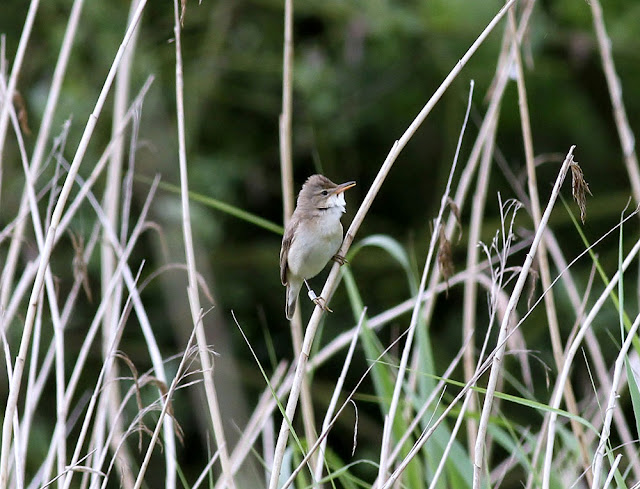Sunday 24th
June 2012
Negative news (or lack
of news, many birders probably otherwise engaged with Euro 2012) on Saturday
night meant prospects of catching up with the New Brighton Little Swift on
Sunday looked uncertain.
Martyn and I hatched a plan with options; a fairly early
start (6.00am) to the day in Staffs with a strategic exit route up to
Merseyside via the M6 should news of the Little Swift break.
We began at Gailey. Every time I’ve been there lately it
tends to pee it down and this was no exception to that rule. Some Swift
movement going on with 100+ and also smaller numbers of House Martin. Also 5 x
Common Tern, Pochard, Little Grebe, Reed Bunting and a Blackcap (h).
A walk across the causeway then resulted in a major soaking.
Negative news on the Swift received. Change of tack, Blithfield. There, we
would find refuge from the rain at least, until it cleared.
Sitting in the hide at Tad Bay we noticed an unusually large
number of Common Terns for this time of the year, 31 in this bay alone. Many of
these possibly failed breeders, the high water levels this year no doubt
resulting in a disappointing breeding year for many of our common species. Also
2 Oystercatcher, Shoveler and again a huge number of Swifts. Talking of Swifts,
Martyn then received a pager message
regarding the Little Swift. It was back and we were headed Scouseside.
The drive north went smoothly, but I was
worried by messages of no news. In just under two hours we were in New Brighton
and by this time the birders present had managed to relocate the Little Swift above the residential streets around St George’s Mount.
Although it wasn’t on view upon our arrival
we didn’t have long to wait. There was a number of Common Swifts doing a feeding
circuit and the Little Swift would appear every 10-15 minutes or so.
It was a very distinctive bird and could be
picked out from the Common Swift with ease once you had got your eye in. Aside
from the extensive white rump (which could only be seen in the right light) the
bird was different from Common Swift in a number of ways. The easiest way to
pick it out was by its tail, which was short and square-edged. Its flight was a
little more fluttery than Swift too.
I found this bird an absolute joy to observe
and we only took a short Morrison’s sarnie break for lunch then went back for
seconds rather than moving on. A friendly and well-behaved twitch too, well
apart from a few cobra-drinkers on a street corner. Genuinely interested and friendly
locals here too. This was the second time I've twitched a rare Swift in Merseyside, the first being the Pallid Swift just across the river at Seaforth in 2009.
 |
| Images of Little Swift - courtesy of Martyn Yapp |
Also during our visit we noted (of course)
many Common Swift, House Martin, 2 Curlew over and Blackcap (h). A very brief
stop along the front and we saw Ringed Plover, 5 Turnstone, Linnet and many
Terns out at sea.
On a sad note, a very
poorly seal was on the front and had attracted the attention of members of
the public, some who were stroking it and thought it was just sleeping and
would be fine. I'm sorry to tell you this but...















